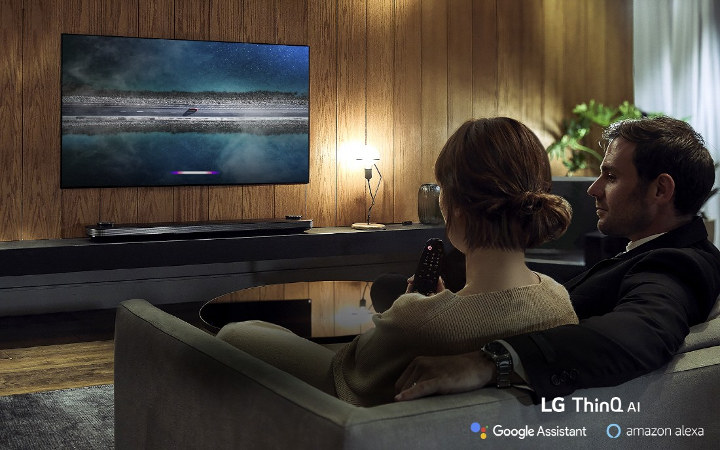Last year Samsung unveiled their first 8K TV right before CES 2018 with a 85″ QLED model that can now be yours for a cool $15,000, and capable of upscaling SD / HD content to 8K using artificial intelligence since 8K content was not – and still is not – broadly available.
One year has passed, and now LG has announced two new 8K TVs with HDMI 2.1 inputs just before CES 2019. Both 88″ Z9 OLED TV and 75″ SM99 8K LCD TV are powered by the company’s α9 (Alpha 9) Gen 2 processor running deep learning algorithms to deliver enhanced picture and sound.
 The press release gives an overview of how AI works on both video and audio as follows:
The press release gives an overview of how AI works on both video and audio as follows:
In addition to content source detection, the new processor finely adjusts the tone mapping curve in accordance with ambient conditions to offer optimized screen brightness, leveraging its ability to understand how the human eye perceives images in different lighting. The processor uses the TV’s ambient light sensor to measure light levels, automatically adjusting brightness to compensate as needed. The α9 Gen 2 AI can further refine HDR content by adjusting the brightness to transform even the darkest scenes into ones with incredible contrast, detail and depth of color, even in brightly-lit rooms. And by leveraging Dolby’s latest imaging innovation which intelligently adjusts Dolby Vision content, LG TVs deliver a compelling HDR experience under varying ambient light.
Sound quality is augmented by an intelligent algorithm that can up-mix two-channel audio to deliver convincing virtual 5.1 surround sound. The α9 Gen 2 optimizes output based on content type, making voices clearer in movies, dramas and news broadcasts, among others. Users can adjust sound settings to suit room conditions or let their LG TV intelligently set the perfect levels based on its positioning.
The full specifications of the 8K TVs have not been disclosed just yet, and I could not find the product pages, but the combination of HDMI 2.1 ports and NanoCell TVs with ThinQ AI will support high frame rate (HFR) at up to 120 frames per second for better rendering of sports and action movies. The TVs also support other features part of HDMI 2.1 specification including enhanced audio return channel (eARC) for higher bitrate audio and up to 32 channels, variable refresh rate (VRR) and automatic low latency mode (ALLM) for an optimal gaming experience.
Finding 8K content and HDMI 2.1 compatible hardware will still likely be a struggle this year, or at least be a prohibitively expensive endeavor for most people. Availability and pricing the new LG 8K HDMI 2.1 TVs have not been disclosed at the time of writing.
Via Engadget

Jean-Luc started CNX Software in 2010 as a part-time endeavor, before quitting his job as a software engineering manager, and starting to write daily news, and reviews full time later in 2011.
Support CNX Software! Donate via cryptocurrencies, become a Patron on Patreon, or purchase goods on Amazon or Aliexpress




